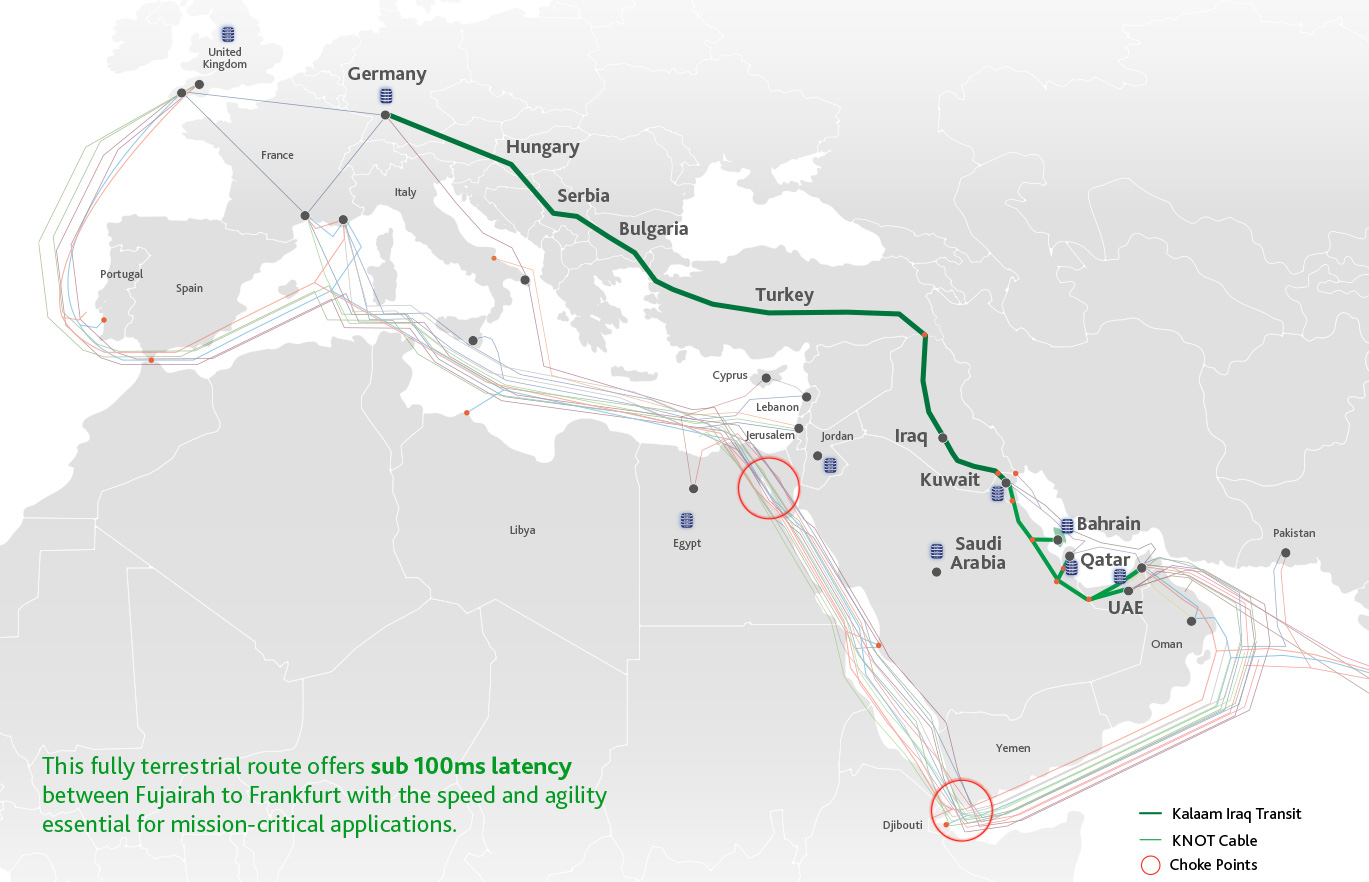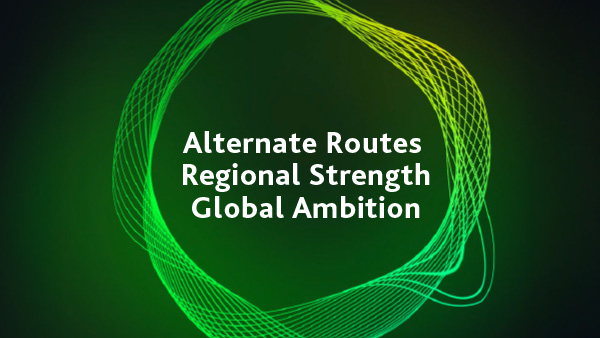Rethinking Global Connectivity: Why the Middle East Now Shapes the Digital Map
In a hyperconnected world, digital infrastructure is no longer an enabler – it is the engine powering economies, governments, enterprises, and innovation. Any disruption to connectivity today does not just slow down business – it stalls national agendas, impacts financial markets, and puts digital transformation at risk.
Over the last few years, the Middle East has evolved from being a strategic corridor to becoming a digital nexus linking Asia, Europe, and Africa. Hyperscalers, financial institutions, content providers, and cloud platforms are accelerating their investments in the region, making resilient connectivity more critical than ever.
At Kalaam Carrier Solutions, our strength has always been foresight. We have consistently focused on building alternative, reliable, low-latency routes that ensure seamless connectivity between the Middle East and the rest of the world.
The Red Sea Bottleneck: A known chokepoint in the Global Network
For decades, majority of submarine cables connecting Europe and Asia have passed through the Red Sea and landed in Egypt before entering the Mediterranean. But with rising traffic, shallow waters, and congested maritime zones, this corridor has increasingly become a single point of failure.
Cable cuts caused by shipping activity near the Suez Canal have repeatedly triggered major outages, disrupting banks, hyperscalers, cloud services, and enterprise networks. The repair process is slow, complex, and costly – making redundancy no longer optional.
2024 has further highlighted the urgency. After geopolitical tensions and cable sabotage in the Red Sea and Saudi peninsula earlier this year, many networks experienced large-scale disruptions and prolonged restoration timelines.
Anticipating the Crisis: Alternative Routes Before They Were Needed
Long before the outages of 2024, Kalaam Carrier Solutions had already invested in building a terrestrial alternative to the Red Sea route. We were one of the first to activate a protected path connecting all GCC countries through Saudi Arabia, transiting via Jordan and onward to Europe. This path quickly became a preferred choice for carriers and enterprises alike – especially in the BFSI sector, thanks to its latency advantages and stability.
From the GCC to Europe – Without Touching the Red Sea
When 2024’s geopolitical events impacted the main terrestrial and maritime corridors, Kalaam took another bold step.
A terrestrial northern path- running through the GCC, Iraq, and Turkey had long been discussed in theory. But no one had operationalized it. With Iraq’s rapid economic recovery and growing digital ambitions, we saw the potential to finally unlock that corridor. Leveraging our KNOT cable system – connecting Saudi Arabia, Bahrain, Kuwait, Qatar, and the UAE – we extended our reach from Kuwait into Iraq, and onward into Turkey and Europe.
The outcome: the first fully terrestrial route from the GCC to Frankfurt, bypassing both the Red Sea and Mediterranean chokepoints.
This route offers:
Introducing the Kalaam Iraq Transit
This new corridor- now known as the Kalaam Iraq Transit – has quickly become one of the most in-demand pathways for stability, reach, and performance. Through a strategic partnership with the Iraqi Informatics & Telecommunication Public Company (ITPC), Kalaam was the first to secure transit licensing and operational rights.

Today, global carriers, hyperscalers, financial institutions, and large enterprises rely on this route to safeguard continuity and lower latency between the Middle East and Europe.
Alternative Mindset, Real World Impact
Being first has never been our goal – being prepared has. Our approach has always been to think ahead of disruption, not react to it. This vision is what sets Kalaam apart as the region’s true alternative network partner. The market doesn’t just recognize Kalaam for infrastructure – it recognizes us for mindset. And as the demand for diversified terrestrial and subsea routes grows across the GCC, KSA, Iraq, and Turkey, we’re only getting started. The future of global connectivity is being rewritten- and the Middle East is no longer just on the map. It is the map.
Article by
Naveen Rajagopalan
Chief Commercial Officer
Kalaam Carrier Solutions

